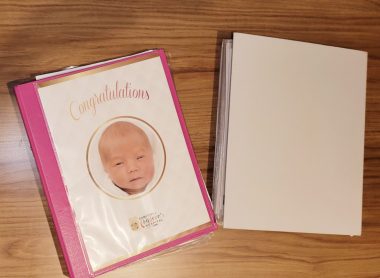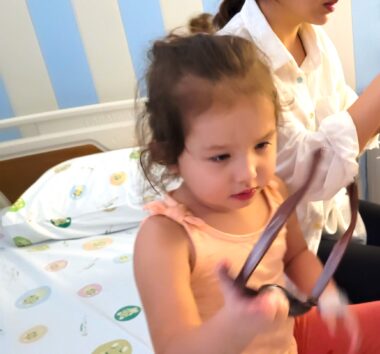Our documented journey will pave the way for future families
Sharing our experiences is how we contribute to the rare disease community
Written by |

My “Journey of Beautiful Destinations” column is designed for caregivers. In each post, I consider the nuances and specific challenges faced by families who are affected by aromatic l-amino acid decarboxylase (AADC) deficiency. However, I also communicate with doctors and healthcare professionals to share insight with them from a parent’s perspective. Communicating with both sides is essential to creating change.
AADC News recently provided an excellent overview of a position paper my wife, Judy, and I helped to publish in the Orphanet Journal of Rare Diseases. The paper is designed to provide healthcare professionals with a guide on caring for children after they’ve received gene therapies such as Upstaza (eladocagene exuparvovec).
Parents should also find the paper helpful, as it condenses everything I discuss in my columns. Transitioning our parent experience into the world of science caused a fog of doubt to cross our minds, yet we realized it was not an esoteric process. All parents can contribute, and the medical community would love to hear from you.
Power of parents
Every parent can contribute to closing the gap in our understanding of AADC deficiency, and it doesn’t require a research paper. We all have the power to share essential data.
Our daughter, Rylae-Ann, began showing symptoms when she was about 3 months old. Immediately, our barrage of cute baby photos became a documentation of strange symptoms.

As Rylae-Ann’s parents received records from hospitals and clinics, they made scanned copies and organized the essential documents, photos, and videos. (Photo by Richard E. Poulin III)
While at home, we took photos and videos of anything that seemed meaningful. We wrote notes about important events and described what we saw. All of this helped our doctor better understand what we were seeing at home. If we relied solely on our memory during hospital visits, we wouldn’t remember all the events, which we knew would hinder our accuracy. Also, we failed miserably at using the correct medical terms and describing the details. Finally, sometimes we didn’t share certain information, thinking it wasn’t necessary.
Documenting what we saw at home eventually helped us get a diagnosis for our daughter when we were still searching for answers. Even after receiving a diagnosis, we continued contributing media to our doctors. AADC deficiency has many phenotypes. Symptoms will also change as your child gets older, as will how you care for them.
Additionally, more children with AADC deficiency are being treated with gene therapy. The road map for aftercare is still being developed, which is why we worked on publishing the position paper with the help of leading AADC deficiency doctors. Those who have received gene therapy must do the same.
Each photo we share adds more data to the long-term understanding of this disease.
Participation in appointments and beyond
We visited several specialists at different hospitals. Finding a doctor with extensive knowledge, specifically on AADC deficiency, was challenging. Thankfully, telehealth is providing more options. In addition, caregivers will become the coordinators for different paramedical treatments.
Providing a detailed medical history for our child helped professionals understand our daughter’s rare disease better. That required us to scan and save documents online. Doing so allowed our daughter to have better care and helped educate those accessing the information.

Rylae-Ann stays distracted, playing with her father’s sunglasses while her mom talks with the doctor and takes notes. (Photo by Richard E. Poulin III)
Judy and I were active participants during appointments with any doctor or therapist. As we documented our home life with Rylae-Ann, we also prepared questions. In the beginning, I felt unsure of myself or mistakenly assumed the doctor would have all the answers. I realized, however, that asking the right questions helped doctors make the proper recommendations.
After receiving information, we followed up by asking for clarifications, which helped me remember what we were told and ensured I understood everything correctly. Often, our questions spawned additional discussions we wouldn’t have had otherwise.
Because of Rylae-Ann’s anxiety from pediatric medical trauma, getting past the reception desk was arduous. Judy and I looked as if we’d summited a mountain by the time we finally got to the appointment room. If we hadn’t prepared our questions, we probably would’ve just stared blankly at the doctor.
We recorded our notes during the discussion, which turned out to be a great idea. I managed Rylae-Ann while Judy feverishly took notes on her phone.
Contributing to the community
Rare Disease Day just passed, but our community lives it daily. We don’t have to write research papers to contribute. Start off small and help educate the professionals around you. Your family’s story is precious information that’ll benefit future generations.
Note: AADC News is strictly a news and information website about the disease. It does not provide medical advice, diagnosis, or treatment. This content is not intended to be a substitute for professional medical advice, diagnosis, or treatment. Always seek the advice of your physician or other qualified health provider with any questions you may have regarding a medical condition. Never disregard professional medical advice or delay in seeking it because of something you have read on this website. The opinions expressed in this column are not those of AADC News or its parent company, Bionews, and are intended to spark discussion about issues pertaining to aromatic l-amino acid decarboxylase deficiency.







Leave a comment
Fill in the required fields to post. Your email address will not be published.